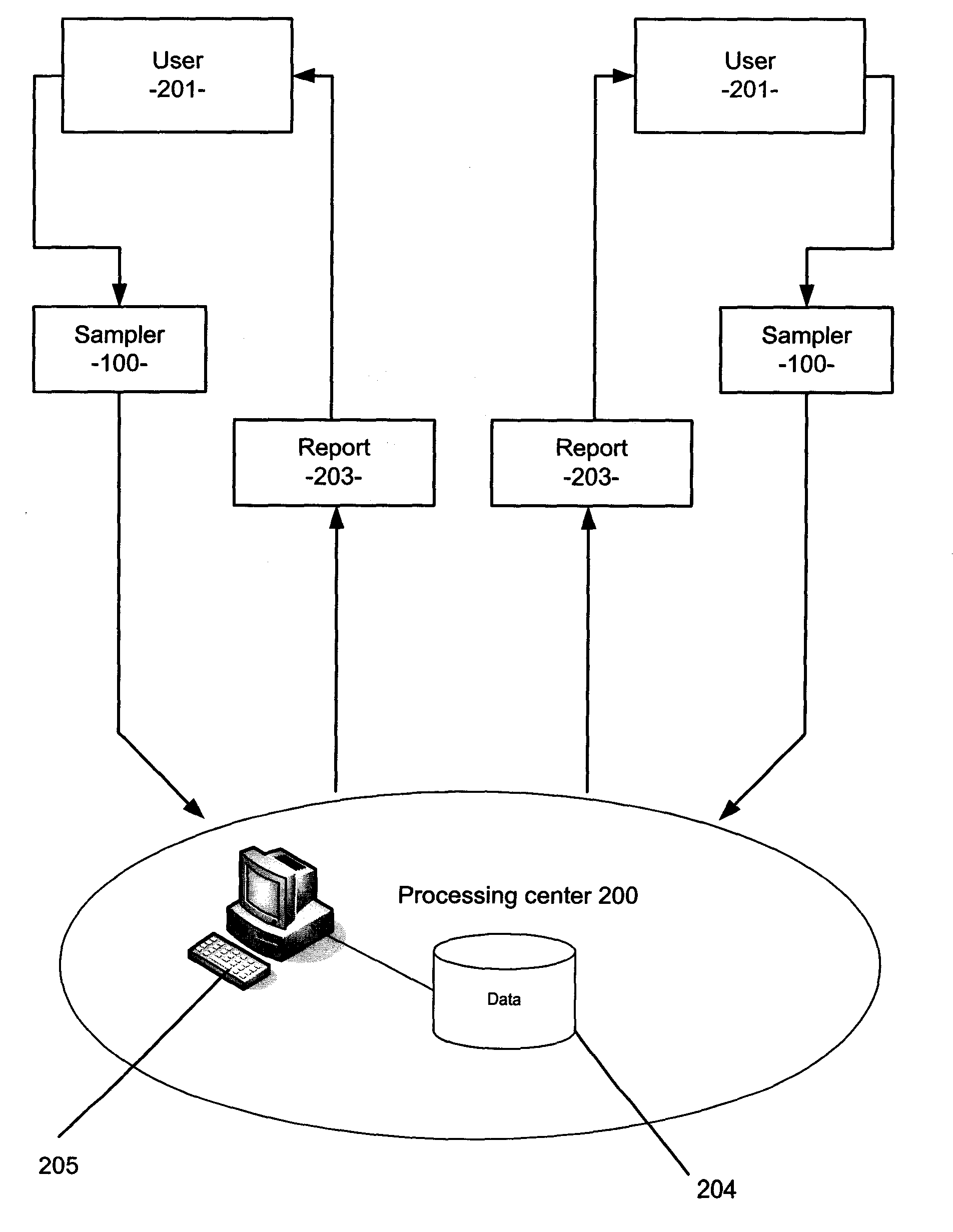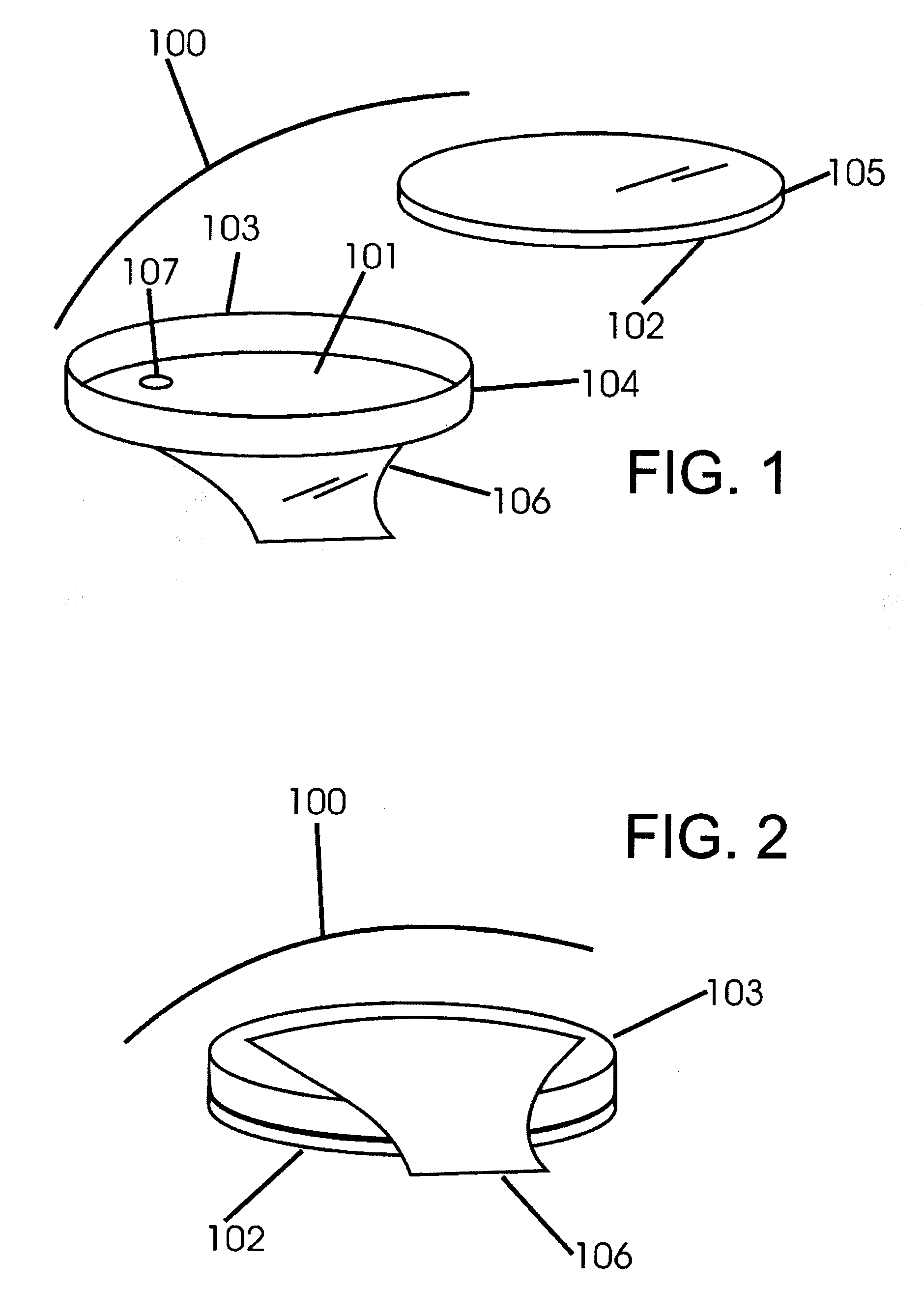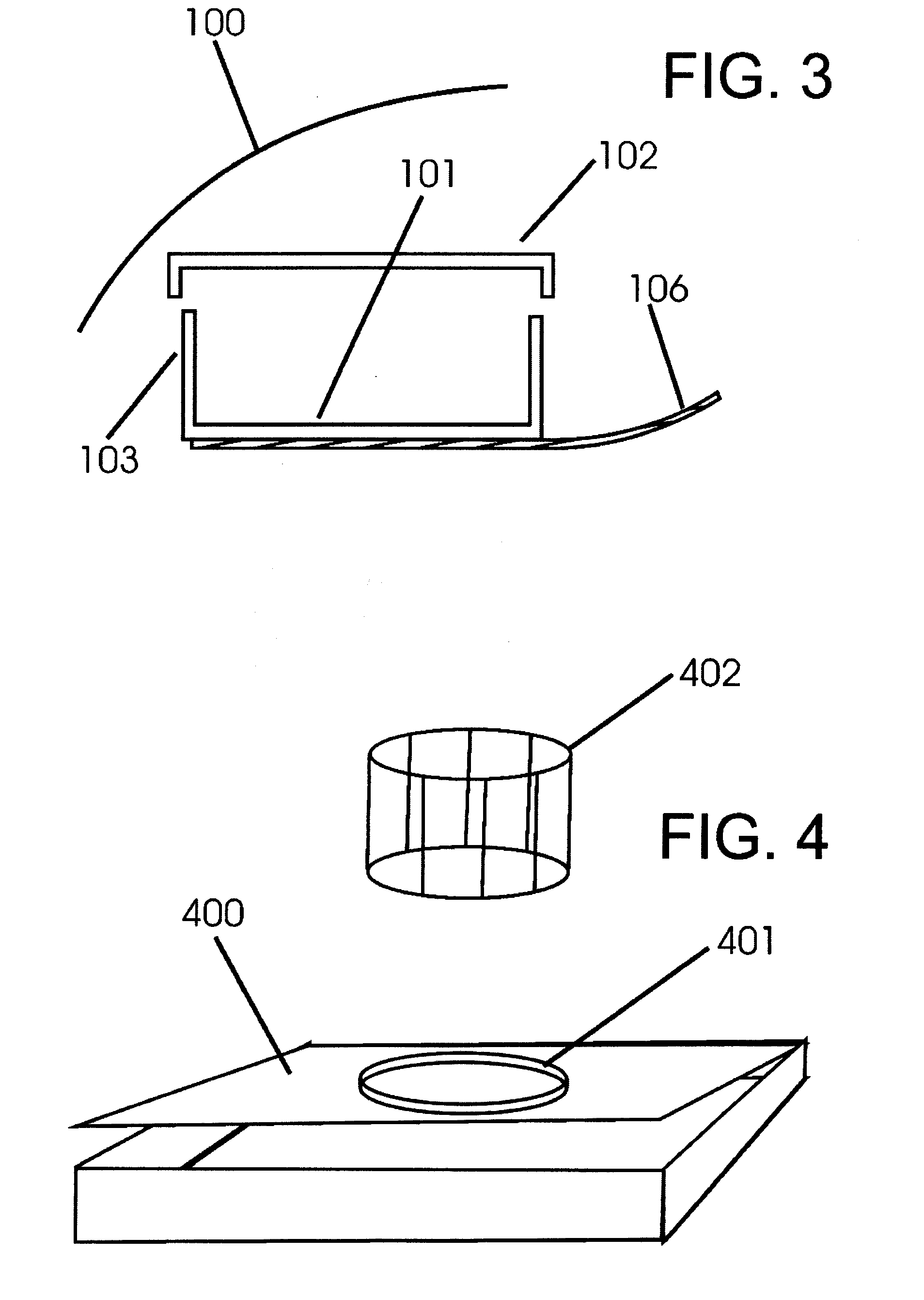Apparatus and Method to Monitor Particulates
- Summary
- Abstract
- Description
- Claims
- Application Information
AI Technical Summary
Benefits of technology
Problems solved by technology
Method used
Image
Examples
example 1
[0151]A homeowner is concerned about the presence of asbestos fallout coming from the renovation of an old building in the nearby area. He goes to a store and purchases a 24 hour air particle test kit. The kit contains one sampler 100. At home he removes cover 102 from sampler 100 and then pulls off foil 106 thereby charging surface 101. He places sampler 100 on a horizontal surface in the bedroom at a height of 150 cm from the floor.
[0152]After 24 hours the homeowner replaces cover 102 on sampler 100 thereby sealing it. On a paper form the homeowner writes his address and the type of room in which sampler 100 was placed, namely, in a residential house in the bedroom. He then sends sampler 100 along with the form to central processing center 200 using a preaddressed, padded envelope which was included in the kit. The homeowner then receives report 203 by mail with information about particles collected in sampler 100. Report 203 contains graphs which compare the collection rates of p...
example 2
[0153]User 201 is a company which monitors particulate contamination in five class 100,000 computer rooms. As is known in the art a class 100,000 room has a limit of 100,000 half micron particles per cubic foot. At the entrance of each computer room there is a sign which reads: “Air Particle Levels in this room are constantly monitored with the DustCheck system.” As a result, workmen who do work in the rooms are extremely careful not to generate contamination, since they realize that contamination they generate would be registered. In each room there is a measuring station 400 placed on a horizontal surface. At the beginning of each month, sampler 100 that had been collecting particulate during the previous month is removed from the measuring station 400 and replaced with an unused sampler 100 stored in measuring station 400. The used sampler 100 is sealed with cover 102 and sent to processing center 200 for analysis. Processing center 200 sends the company reports 203 by email as f...
example 3
[0154]User 201 is a company with an office building with 4 floors. At the door of the building there is a sign “For your protection, airborne particle levels in this building are monitored 24 / 7 by the DustCheck system”. On each floor there is a measuring station 400 placed on a horizontal surface. At the beginning of each month, the sampler 100 that had been collecting particulate during the previous month is removed from the top of measuring station 400 and replaced with an unused sampler 100 stored in measuring station 400. The used sampler 100 is sealed with cover 102 and sent to processing center 200 for analysis. Processing center 200 sends the company reports 203 by email as files in the PDF format with open passwords. Reports 203 have graphs which compare particle levels on the different floors with levels from previous test periods, as well as the average particulate levels of all similar office buildings stored in the data-base 204. In one report 203, the company is alerted...
PUM
 Login to View More
Login to View More Abstract
Description
Claims
Application Information
 Login to View More
Login to View More - R&D
- Intellectual Property
- Life Sciences
- Materials
- Tech Scout
- Unparalleled Data Quality
- Higher Quality Content
- 60% Fewer Hallucinations
Browse by: Latest US Patents, China's latest patents, Technical Efficacy Thesaurus, Application Domain, Technology Topic, Popular Technical Reports.
© 2025 PatSnap. All rights reserved.Legal|Privacy policy|Modern Slavery Act Transparency Statement|Sitemap|About US| Contact US: help@patsnap.com



